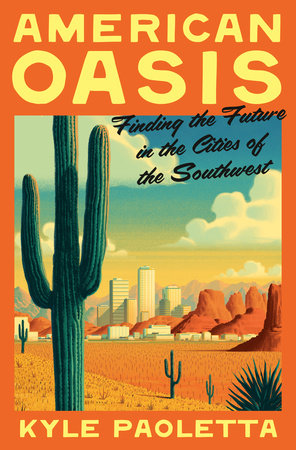Part I
They Are Many and Keep Coming
Tiguex—Kuapoga—Phoenix—El Paso del Norte—Cuk Ṣon
Marrow
Its rank is a mountain and must live as a mountain, as a black horn does from base to black horn tip. See it as you come, you approach. To remember it, this is like gravel.
—Layli Long Soldier
At first, Albuquerque felt infinite. Though I was born in Santa Fe, my family moved to the hills on the other side of the Sandia Mountains from Albuquerque when I was five, and most of my childhood was spent tromping through heavy snow and building forts out of piñon branches and desiccated cholla fronds. When my parents took me along for the forty-five-minute drive into town I was shocked by the immensity of the city. Each time we rounded the last crook of the Tijeras Pass through the mountains I was startled anew by how suddenly the rocky, wooded mountainsides of the Sandias fell away in favor of a sweeping vista of glass and pavement that declined steeply into the valley of the Rio Grande before rising back up the other side, where, even if you squinted, it was impossible to make out the line where city ended and desert began.
Albuquerque’s form and limits only began to clarify once I started middle school on the other side of the mountains. My friends were mostly scattered across the Northeast Heights, the grid of country blocks that surged out from Albuquerque’s historic center by the river to meet the Sandia foothills in the decades after World War II. Through the early years of the 2000s, the epicenter of my universe was Active Imagination, a store on Montgomery and Juan Tabo where I spent hours browsing miniatures or playing games, my mind drifting toward escape. On afternoons when my parents’ errands ran long, I’d explore the rest of the strip mall, and whenever I had friends in tow, we’d pool change for a burrito from La Hacienda Express or a treat from the Italian ice place, which the Philadelphian owner had decorated exclusively with Flyers gear.
Once we had driver’s licenses, weekend afternoons killing time at Active were exchanged for evenings in the far orbit of the Duke City music scene. My understanding of Albuquerque shifted away from the predictable subdivisions of the Heights to the all-ages venues downtown and the smoky coffee shop patios of Nob Hill, where high schoolers could eavesdrop on University of New Mexico (UNM) students with sophisticated piercings and worn-out copies of Anzaldúa and
Pedro Páramo. From reading the
Alibi, the city’s alternative weekly, I learned to refer to the city as “Burque,” though it would take me years to realize that rhyming that nickname with the word
key, as I had assumed was proper, was about as Anglo as it got.
By that time, Albuquerque’s gravitational pull had worked its magic on my parents as well—much as they preferred the quietude of the mountains, both of them ended up working in the city, which made it hard to justify the long commute, especially in the winter when the Tijeras Pass iced over and semis started fishtailing across I-40. They split the difference by moving us to a neighborhood aptly called the Foothills, a tangle of sparsely populated roads at the city’s utmost northeast, within spitting distance of the Cibola National Forest. From our porch, any sense of the city as limitless was immediately punctured. The metropolis petered out at the edge of the barren West Mesa, the dark humps of the trio of long-dormant volcanos called the Three Sisters standing out there beyond the city limits, in open space. At night, the streetlights of the Heights’ broad, ramrod-straight avenues descended toward the black wriggle of the Rio Grande, tangling at its banks and then reemerging again on the Westside, wobbling their way into the tenebrous beyond. Most startling was how the lights abruptly dead-ended just to the north of us, the border of the Sandia Pueblo representing an impervious frontier.
I was a white Albuquerque Academy kid, a student at the private school that real-deal Burqueños thought of as a country club. The fact that I even hung out downtown at night was considered scandalous; were I to instead begin frequenting the South Valley, Barelas, Sanjo, or the so-called War Zone, a faculty member would surely intervene. All of those neighborhoods were predominantly Mexican, Black, and Indian, and in the imagination of comfortable Anglos and Hispanics in the Heights the vague threat they represented lacked any of the alluring urban edginess of downtown Albuquerque, Nob Hill, or the Student Ghetto that abutted UNM.
That we would think nothing of avoiding these places while still believing in the myth of the three cultures of New Mexico is, in retrospect, appalling. My entire education, first in public school in the East Mountains and then at the Academy, involved extensive instruction about how the state’s special character had to do with the unique comity between Hispanics, Anglos, and Native Americans. Yes, there had been bloodshed in the distant past—the Pueblo Revolt of 1680, the Mexican-American War, century after century of skirmishes with the Comanche, Apache, and Navajo—and, sure, the bipartisan militarization of the border that began under President Bill Clinton and was supercharged after 9/11 was fueling anti-Mexican rhetoric in dreaded Texas and Arizona. But here in New Mexico, the Land of Enchantment, we were immune from such troubles. This was a place that had figured the whole racism thing out, where all could partake in the state’s affairs as peers. Bill Richardson was governor; Marty Chávez was mayor. Equality reigned.
This line of thinking was nonsense. But it was nevertheless a gospel that both Anglos and Hispanics believed in—at least the ones monied enough to distance themselves from the depredations experienced by the largely Latino and Indian underclass living without utilities along gravel roads in the South Valley or curled up in blankets and cardboard in bus shelters on Central Avenue.
I was midway through high school when I began to unlearn the fiction of New Mexican racial harmony, part of a summer theater program with a company called Tricklock that held its rehearsals at the National Hispanic Cultural Center in Barelas. The NHCC was a brand-new facility, a tasteful campus of well-lit adobe galleries and cavernous performance venues, the walkways between them lined with flowering ocotillos and leafy cottonwood trees.
Just up 4th Street, the Barelas Coffee House’s tables were always crowded with families savoring hulking platters of huevos rancheros and steaming bowls of pozole; the supposed industrial wasteland of South Broadway was in fact full of markets and taco joints; across the river in the South Valley, the streets nearest the Rio Grande’s muddy banks were made shady by the Bosque’s overhanging trees, and as these routes turned west, they opened out into wide fields and quiet neighborhoods cut through by long-tenured acequias.
These environs were poorer than the Heights, certainly. Walls were tagged up, carjackings common. I was particularly incensed one afternoon after rehearsal when I got back to my car and realized someone had boosted four leather binders stuffed with CDs that I kept on the passenger’s seat. Even so, I fell under the spell of the older quarters of Albuquerque, a version of the city distinct from the generic suburbia I otherwise inhabited, where the windows of big-box stores shimmered in the sun, a mirage of plenitude. However derelict, the old neighborhoods made the boosterish claims about New Mexico that I’d ingested more believable: that it was a place of sweeping history, as foundational to the American experiment as the English colonies of New England and Virginia that dominated our textbooks.
I began to understand Albuquerque as a city that operated across a fundamental divide. But that new appreciation only begged more questions. How had the city become so deracinated? What were the forces that conspired to enforce a sense of sameness on a place of such immense diversity? Those questions only began to resolve when I came across a startling bit of information, more than a decade after leaving New Mexico for college, that seemed to have been intentionally neglected throughout my childhood: my hometown had spent more years as two distinct cities—New Albuquerque and Old Albuquerque—than it had being one.
The first convention between two of the groups that would eventually make up New Mexico’s three cultures came in 1539, just three years after the bedraggled expedition of Álvar Núñez Cabeza de Vaca reached Culiacán. One of its four survivors was an enslaved Moor from Morocco known as Estevánico, a resourceful polyglot who had learned to communicate with many of the Indians the group encountered on their overland trek. “He was constantly in conversation,” Cabeza de Vaca wrote of Estevánico, “finding out about routes, towns, and other matters we wished to know.” Meanwhile, the three Spaniards assumed a haughty sense of detachment, hoping to convince the Indians that “we came from Heaven.” When the Spanish resolved to send another exploration party into the desert, Cabeza de Vaca was cast aside and Estevánico was commissioned as a guide.
Estevánico led the group to the Zuni settlement of Hawikuh, a large complex of interconnected sandstone rooms built on a high, red-earthed mesa about 120 miles west of the Rio Grande. The urban form of Hawikuh was a legacy of the ancestral Puebloans, the first people to cultivate maize on the Colorado Plateau, a 150,000-square-mile expanse that connects the western slope of the Rockies to the Sonoran and Chihuahuan Deserts. Around 500 C.E., the ancestral Puebloans shifted from living in dugouts and natural rock alcoves to building permanent shelters. Those homes became more elaborate until, by around 1200, they had evolved into vertical cities ensconced in the overhangs of cliffs, most famously at Chaco Canyon and Mesa Verde. Most structures could house dozens of families and the largest, Pueblo Bonita, was a freestanding semicircular complex at least four stories tall, with more than six hundred rooms and forty kivas, the ceremonial gathering spaces that could only be accessed by climbing down a ladder jutting out of a hole in the domed roof.
I knew nothing about the ancestral Puebloans when my parents first took me to visit Chaco Canyon as a kid, but the place made an indelible impression. I remember the intense heat of the sun on the sandy footpath that led through the belly of the canyon, the yellow of the cliff faces on either side, then disbelief at how the surviving walls of a greathouse called Kin Kelso seemed to emerge from the rock itself. Only up close did the stone brickwork of its walls become obvious, even as the material continuity between natural world and human creation remained. Then there was the great kiva at Chetro Ketl, a perfect circle carved into the earth and walled in flagstone, large enough for more than a hundred people to sit comfortably.
In the early 1100s, the Colorado Plateau suffered under a crushing fifty-year drought, followed by decades of climatic instability. This meant that, for all their grandeur, the cliff dwellings were only occupied for about a century. By 1300, all had been abandoned, with many of their former residents heading south and settling along the Rio Grande and its tributaries, where they became integrated into the existing Indigenous population. What resulted were upward of a hundred villages across the region where the old forms of the cliff dwellings were softened by the necessity of building out of mud brick rather than rock. Life in these villages was organized around a new religion borne out of the cultural mingling, wherein ornate Katsina dolls were used to invoke and communicate with a pantheon of spirits. Despite those cultural commonalities, it was a balkanized world, with eight distinct linguistic groups—from Hopi in the far west to Tewa in the north and Piro in the south—and a wide diversity of cultural and religious practices particular to each settlement that emerged over the next two hundred years.
By the sixteenth century, several hundred people lived in the Zuni town of Hawikuh, and its placement gave it an ample view of the scrublands to the southwest over which the Spanish would have approached. Given the importance of gift giving among many of the tribes he had already encountered, Estevánico attempted to smooth his arrival by sending ahead a scout with colorful feathers and a rattle. The Zuni were unimpressed. They warned Estevánico and his men to turn back; when they didn’t, most of the group was imprisoned. The last record of Estevánico has him slipping out of his bonds and fleeing over the mesa, accompanied by a hail of arrows.
Despite the ignominious end to the adventure, the Spanish became besotted with the stories of a friar who had traveled with Estevánico named Marcos de Niza. Since the Spanish colonial project was animated as much by the missionary fervor of the crown as by the earthly pursuit of wealth by its subjects, de Niza’s claim that Hawikuh was in fact one of several fabulously wealthy cities that could be found in the northern deserts was eagerly received in Mexico. Thus was born the myth of the Seven Cities of Cíbola, places so rich in gold that the metal was used to build walls that glistened invitingly in the sun. In 1540, just one year after Estevánico’s failure, Francisco Vázquez de Coronado rode out of Culiacán to conquer the Cities of Cíbola, bringing with him an army of 350 Spaniards, 1,300 Mexican Indians, and 4 Franciscan missionaries.
De Niza led Coronado straight to Hawikuh. Undeterred by Coronado’s army—and, perhaps, enraged by the interruption of their celebration of the summer solstice—the Zuni charged. At least ten were immediately killed in the volley of Spanish gunfire, a great crash of explosive force that resounded across the mesa. It was undoubtedly the first time the Zuni had witnessed the violence of firearms. Terrified, they retreated from Hawikuh to their other settlements across the plateau while Spanish soldiers went room to room, grabbing corn and anything else that looked edible.
Despite his immense displeasure at discovering that the golden city de Niza had promised was actually built from stone and mud, Coronado used Hawikuh as a base of operations for several months. While he was there, the conquistador received emissaries from several other tribes who had heard about the Spanish guns and hoped to head off a confrontation. The man who visited from the village of Cicuye (later known as Pecos) was labeled “Bigotes” in recognition of his impressive mustache. Bigotes was a savvy diplomat, well acquainted with the thriving intertribal trade that characterized life in the arid lands before European contact. He seems to have even spoken Nahua, allowing him to converse with some of the Mexican Indians in Coronado’s army, who could in turn translate for the conquistador. To charm the new arrivals, Bigotes bore an exotic gift: robes made from buffalo, the hides surely acquired from one of the nomadic tribes of the Great Plains. When the Spanish asked where they could find the enormous “prairie cattle” Bigotes described, he said he’d be happy to show them, though it would mean traveling far to the east.
Copyright © 2025 by Kyle Paoletta. All rights reserved. No part of this excerpt may be reproduced or reprinted without permission in writing from the publisher.







